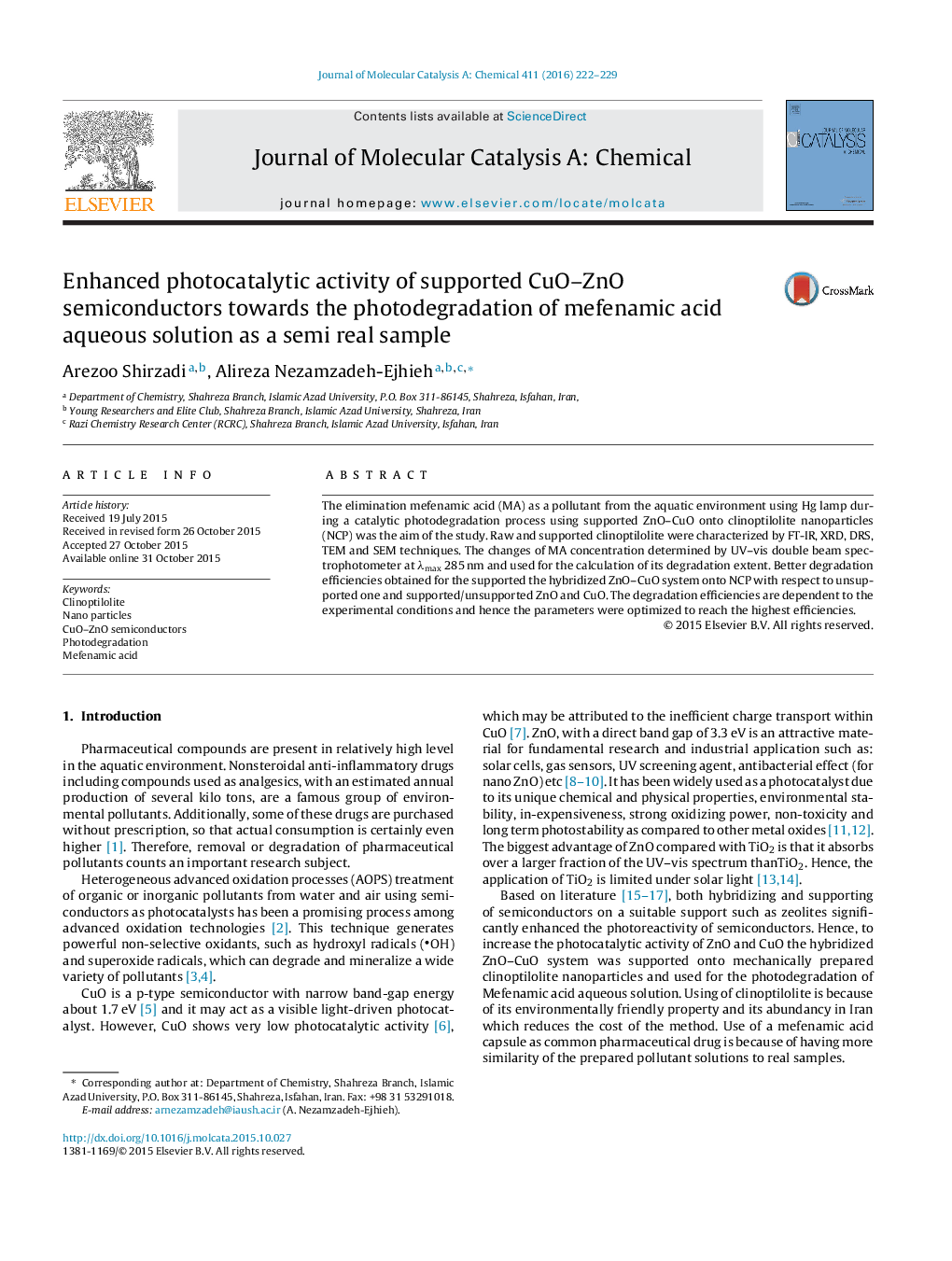| Article ID | Journal | Published Year | Pages | File Type |
|---|---|---|---|---|
| 64783 | Journal of Molecular Catalysis A: Chemical | 2016 | 8 Pages |
•Increased photocatalytic activity of the hybridized CuO–ZnO rather than un-hybridized one.•Better activity of the supported CuO–ZnO than the unsupported one.•Effect of CuO/ZnO ration on the activity of the supported hybridized system.•Good capability of the CuO–ZnO/NCP to degrade mefenamic acid in aqueous solution.
The elimination mefenamic acid (MA) as a pollutant from the aquatic environment using Hg lamp during a catalytic photodegradation process using supported ZnO–CuO onto clinoptilolite nanoparticles (NCP) was the aim of the study. Raw and supported clinoptilolite were characterized by FT-IR, XRD, DRS, TEM and SEM techniques. The changes of MA concentration determined by UV–vis double beam spectrophotometer at λmax 285 nm and used for the calculation of its degradation extent. Better degradation efficiencies obtained for the supported the hybridized ZnO–CuO system onto NCP with respect to unsupported one and supported/unsupported ZnO and CuO. The degradation efficiencies are dependent to the experimental conditions and hence the parameters were optimized to reach the highest efficiencies.
Graphical abstractFigure optionsDownload full-size imageDownload high-quality image (141 K)Download as PowerPoint slide
